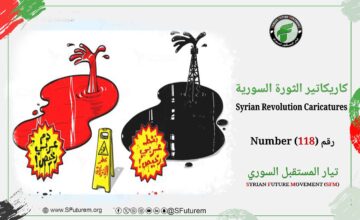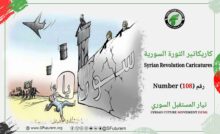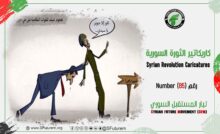Symbols and Figures of the State in Syria (19): Sobhi Barakat

- Sobhi Barakat Al-Khalidi was born in 1889 in the city of Antakya al-Asi.
- He became one of the prominent notables of Antakya and a leader of the resistance against the French during the revolution that paved the way for the Turkish-French war.
- After the war, he moved to the State of Aleppo, established by the French, and made it the center of his political activities.
- Barakat’s primary language was Turkish, and he could only articulate a few consecutive Arabic words.
- He was distant from the nationalist movement in Damascus, which fought against the French mandate to establish a unified Syrian state with Damascus as its capital. This movement was largely rooted in Arab nationalism dating back to the Ottoman era, represented by the People’s Party led by Abdul Rahman Shahbandar in the 1920s and 1930s, and the National Bloc in the 1930s. Barakat, due to his upbringing and background, was disconnected from this movement. Furthermore, his preference for Aleppo as the capital of Syria made him unpopular in Damascus.
- Barakat attempted to mitigate the disdain of the Damascenes by marrying Layla, the daughter of Mohammed Ali Al-Abed, his Minister of Finance and a prominent Damascene notable. However, the marriage was brief and unsuccessful.
- During the Great Syrian Revolution (1925–1927), Barakat was accused of supporting French bombings of Damascus. In response, the French requested his resignation to appease public anger, leading to his resignation as President of Syria on December 21, 1925.
- Barakat surrounded himself with a Turkmen entourage, many of whom occupied senior public positions, particularly those directly linked to the presidential palace. He was known for his preference for Aleppo as the country’s capital, further diminishing his popularity.
- He won a seat in the Representative Council of Aleppo in 1922, the Constituent Assembly in 1928, and the Syrian Parliament in the 1931 elections. He served as the Speaker of the Syrian Parliament from 1932 to 1936.
- Under Ottoman Syria, he held the title “Bey” and continued to be addressed as such.
- In 1930, Barakat founded the Constitutional Party, which aligned with the French. His friendship with General Sarrail paved the way for his presidency of the Syrian state.
- After 1932, Barakat adopted policies more aligned with the National Bloc. He was also known for his “integrity.”
- He represented Antakya in the Syrian General Congress (June 1919–July 1920), where he contributed to the declaration of the Arab Kingdom of Syria on March 8, 1920.
- After the French Mandate began, he supported the French and pursued a policy of favoring them.
- Initially, Barakat was a revolutionary against France and a companion of Ibrahim Hanano, especially between May 1919 and July 1920. However, a notable from Aleppo, Mahmoud Al-Sharkasi, convinced him to cease fighting the French.
- He later visited Beirut and met with Henri Gouraud, shifting his stance to support the mandate, which led to his alignment with the French and transformed his friendship with Hanano into enmity and intense rivalry.
- Barakat was accused of opposing France in support of Mustafa Kemal, the Turkish president, during Turkey’s war against France in Cilicia. However, after the armistice in 1920 (which resulted in the Ankara Agreement on October 20, 1921, where France ceded Cilicia and northern Syrian territories from the Ottoman provinces of Aleppo and Adana to Turkey), he abandoned the revolution against the French. This led to a halt in the supply of arms and ammunition from Turkey to Hanano’s revolution.
- He participated in the elections for the Representative Council of the State of Aleppo in 1922 and won a seat.
- The Supreme Council of the Syrian Federation elected him as President of the Federation—essentially the head of state—following Henri Gouraud’s declaration of a federal union between the State of Damascus, the State of Aleppo, and the State of the Alawite Mountain on June 22, 1922.
- Under the union’s founding decision, a 15-member constituent body, with five representatives from each state, formed the Federal Council. Barakat was one of Aleppo’s representatives. On the day the union was declared, the constituent members convened in Aleppo and elected him as their president.
- The President of the Federation combined the responsibilities of forming and heading the government with his other duties. Additionally, the three constituent provinces retained representative councils and federal governments.
- Among his most notable achievements during his presidency of the federation were the establishment of the Syrian Gendarmerie and the issuance of Syrian paper currency in August 1922, under an agreement with the State of Greater Lebanon and the State of Jabal al-Druze.
- Following the appointment of Maxime Weygand as High Commissioner and the recall of Henri Gouraud, Weygand responded to the Syrians’ persistent demand for unity and announced the formation of the “Syrian State,” comprising the States of Damascus and Aleppo, on December 24, 1924.
- The decree establishing the state stipulated that the former president of the federal council would serve as president of the state for three years, meaning Barakat’s term would end in late 1927.
- During his presidency, political and social freedoms increased under the new French High Commissioner, General Sarrail. However, these freedoms did not translate into political, administrative, or economic progress. On the contrary, corruption increased, and a culture of buying loyalty within the government spread.
- In contrast, Abdul Rahman Shahbandar, who founded the People’s Party (the precursor to the National Bloc), led a strong opposition against Barakat, advocating sovereignty, national unity, complete personal freedom, and reforms, especially in the judiciary.
- Barakat neither supported the Great Syrian Revolt nor acknowledged its demands or Sultan al-Atrash’s declaration. Instead, he warned ministers, directors-general, and government employees against aligning with the revolt. On November 18, 1925, he issued a law imposing prison sentences of up to two years and fines of up to 500 lira on “anyone who instills fear in the people or disrupts public order through the press or society.”
- This law was enacted eight days after General Sarrail was recalled to France and relieved of his duties following his heavy artillery bombardment of Damascus, which caused massive destruction in the city’s old quarters, especially the neighborhoods of al-Midan and Sidi Amoud (the latter burned and was renamed al-Hariqa after its ruins). Sarrail’s recall signaled a shift in French policy and a decline in Barakat’s favor with the French authorities, who sought to negotiate with “nationalists.”
- From July 1925, his tenure was marked by widespread battles, barricades, chaos, and fiery speeches and articles throughout Syria and even Greater Lebanon.
- Barakat submitted his resignation on December 21, 1925, as security conditions improved in the capital and elections for a representative council were called. He failed to sway or win public opinion.
- He lost all favor with the French authorities. Henry de Jouvenel criticized him in a report to the League of Nations Mandates Commission, suggesting the French wanted to make him a scapegoat for their failed policies in Syria.
- The French High Commission announced Barakat’s resignation and appointed Pierre Alype as interim military governor until May 1926, when Ahmed Nami succeeded Barakat as president.
- Barakat ran for a seat in the Constituent Assembly elections of 1928 and won a seat representing Aleppo.
- After the Syrian constitution was declared in 1930, he founded the Constitutional Party in northern Syria. However, his support for the French and involvement in nepotistic alliances made the party unpopular.
- He participated in the 1931 elections and again won a seat representing Aleppo.
- Following the election results, his home was attacked, leading to eight injuries. This attack was carried out by National Bloc supporters after the bloc’s popular leaders in Aleppo, like Ibrahim Hananu and Saadallah al-Jabiri, lost to Barakat.
- A few days later, National Bloc supporters assaulted him in a hotel in Aleppo, and Akram Hourani and his companions attempted to assassinate him in Beirut the same year.
- On June 11, 1932, the parliament elected Barakat as its speaker with 51 votes against 17 for Hashim al-Atassi. This was part of a compromise crafted by Jamil Mardam, which included forming a government equally split between pro-mandate moderates and the National Bloc, electing a neutral president, and choosing a parliamentary speaker from the moderates.
- Barakat was supported by the “Northern Deputies Bloc,” which comprised 28 members out of 68, but this did not help him regain executive authority, nor did he form any new government.
- After the formation of Haqqi al-Azm’s third government on June 3, 1933, and the growing prominence of the National Bloc both politically and popularly, Barakat began leaning towards the bloc and supported it in opposing the government in parliament.
- On November 24, 1934, when French High Commissioner Charles de Martel suspended parliament for refusing to ratify the Friendship and Alliance Treaty with France, the National Bloc formed a “Work Committee,” of which Barakat was a member.
- During the sixty-day strike in 1936 across most Syrian cities—which led to the formation of a National Bloc delegation tasked with traveling to Paris to negotiate a fair agreement with France—Barakat retired to Antakya and did not return to Damascus. He did not participate in the 1936 parliamentary elections, which the National Bloc overwhelmingly won.
- When the Sanjak of Alexandretta was separated from Syria in 1938, he was residing in Antakya and remained there until his death in 1939.
We, at the Syrian Future Movement, as we commemorate the memory of the founding figures of Syria, recall one of Syria’s influential men and a prominent symbol of the early Syrian state who contributed to shaping its structure—Bayk “Subhi Barakat al-Khalidi.”
This is part of a serialized feature we present to highlight symbols and figures of the Syrian state, aiming to connect our modern present with a solid past and historical milestones.
Our aspiration is to revive within our people the need to build and shape exemplary statesmen, learning from their experiences, overcoming their shortcomings, and building upon their legacy to safeguard the nation, preserve its achievements, and restore the Syrian state’s pride and glory after years of oppression, tyranny, and corruption.






